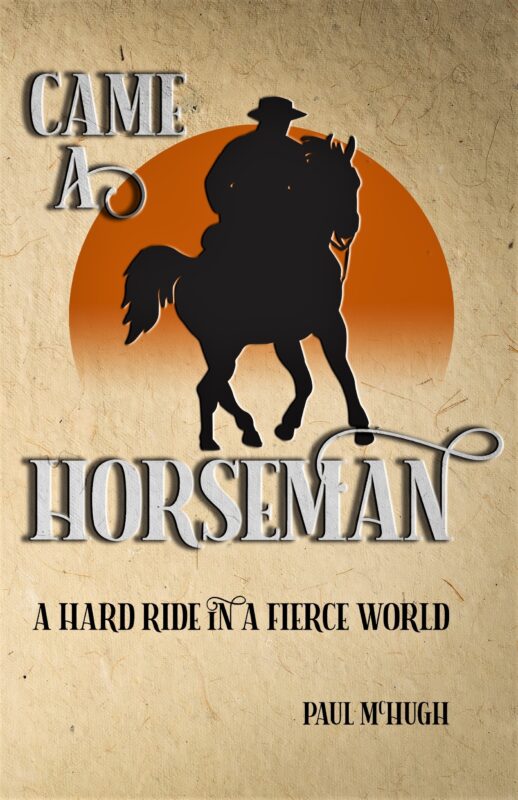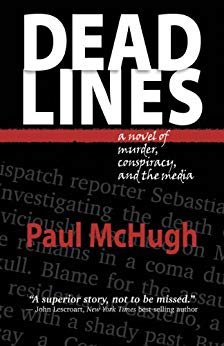California North Coast Series
By Paul McHugh, Outdoors Writer
September 16
Unlike original adventurers and explorers on the North Coast, I arrived bolstered by the aid of a few excellent electronic devices, which I’m not embarrassed to admit. The principal ones were a then-state-of-the-art, Garmin hand-held GPS with a color mapping screen, and a Motorola hand-held marine radio set up with weather channels.
After we pitched camp on Woodley Island in Humboldt Bay, the Motorola informed us of our fate: We’d be stuck there for a few days, marooned by worsening weather. In planning this trip, I’d picked September as our main travel month, and did so to follow the sage advice of commercial fishermen. They’d told me it was usually the best time on the North Coast for flat seas, light winds and clear skies. However, this September was proving anything but usual. Less than two weeks in, we were getting dope-slapped by our second gale.
Winter in Autumn
“Y’know,” a fisherman at the Port of Eureka told us now, “this seems more like a December than any September I can remember.”
Well, just great. But luckily, while cold rain dripped off our tent flies and whipped the branches of trees above our heads, we could amuse ourselves in a variety of ways. One was listening to FM radio on John Weed’s battered portable receiver and headset. During my precious turn on the headphones, I homed in on KHUM, 104.7 and 104.3 on the radio dial.
Used to be, you could tell a lot about a small American town by listening to its radio stations. In the Eureka-Arcata region, you still can. Listening to KHUM is like hearing radio through a time warp – in particular, an FM station from the 1970s, back when local DJ’s were prince-potentates of local airwaves.
Back then, the spontaneous, rambunctious art meant offering up rambling microphone “raps” with lots of local references, an easy tone of familiar intimacy with listeners. Music set lists were intricate air castles, contemporary gestalts, mortared together with inspired logic and oblique cultural references.
Listening to KHUM now is much like that. Music sets ricochet from bluegrass to jazz to rock, from Miles Davis to Bob Marley.
I’d met the station owner and manager Pat Cleary on an earlier research trip. So once Cleary had heard we’d – almost literally – blown into town, he dropped by our camp for a visit.
Rocking Out with a Station Owner
He toted along his fancy Lebeda mandolin to pick out a few tunes with our paddling team’s lead (and only) guitarist, John Weed. Clearly was accompanied by station DJ Mike Dronkers, who had a tapedeck to record an interview with me about our trip.
Turned out, owner Pat Cleary was a relatively fresh convert to the gospel of old-time, local radio. Prior, he happened to be one of the Wall Street investment bankers who helped finance the empire of Clear Channel — the corporate behemoth that grew to control over 1200 radio stations. It also managed most of the live music venues in the U.S. and the content of nearly a million billboards.
Cleary, 47, a sandy-haired man with a round, pleasant face and a relaxed posture, seems like a guy who would never bother to wear a tie. But two decades ago, he was hardly glimpsed without one. That’s when he was a go-getter with a big gig at Chase Manhattan.
“I began to work the media realm in 1980.” Cleary said. “I helped finance the start of Fox. I primarily did start-up of TV stations, cable and radio. Mostly new stuff, not consolidation. Then I met Lowry Mays, who said, ‘I’m gonna be bigger than CBS.’ I thought, ‘Yeah, right.’”
But Mays, a former Air Force officer from Texas, who reportedly won his first radio station in a San Antonio poker game in 1972, was onto something.
“His particular genius was, Mays saw that if he got a station with reasonable revenue, then took expenses out of it by centralizing content, he could really ramp up its income,” Cleary said.
By 1995, Clear Channel had 43 radio stations; a year later, 49 more; 625 were under the umbrella by 1999.
“It’s all been amazing, economically,” said Cleary. “Yet, a curse that came right along with the growth was homogenization. Soul drained right out of the enterprise. You’d drive from town to town, and after 300 miles, you’d still be listening to exactly the same DJ. And that guy might not even know what he was saying, since computer programs cut and pasted his words together.”
Former Banker in Recovery
Cleary began to do a bit of soul-searching. “My original plan had been to stay in New York for two years. But I was stuck there for fifteen. After my first divorce, I began to think, okay Pat, what do you really want? I tried a couple of Outward Bound trips, to clear my head. While rafting on the Colorado, I met a woman named Jennifer who told me I really ought to come to take a look at Humboldt County.
“I went out to Patrick’s Point here, fell in love, stayed for a month. When I went back to New York, I realized that mentally, I had already left.”
Cleary, who now calls himself “a recovering banker,” first tried to establish a venture capital fund. “But when the tech bubble burst, I found, it’s easier to make an investment than get out of one.”
Next, he used his fiscal skills to ride to the rescue of the Arcata Co-op, a popular food store, that was overstaffed and way over budget. During the restructuring process, he got to know a local radio station, KHUM, that was creative and well-intentioned, but also in dire straits.
In 2000, he bought it. Music that had played in the background ever since his childhood piano lessons shot to the fore. Now Cleary plays both blues harmonica and keyboard, as well as a ton of bluegrass mandolin.
Shipping Out Good Vibrations
He has KHUM out on two signals, and KSLG airing contemporary rock aimed at Humboldt State University students. Station staff members are welcome to rise through the ranks as long as they understand the community, have a good line of patter, and a robust love for music.
The stations thrive on presenting local musicians (Cleary has just released his first CD of live station-studio performances). They sponsor six local concerts a year. He plans to release specialty shows, like the Frank Zappa hour, on streaming Internet audio, and bring KHUM to the globe.
But Cleary seemed equally pleased by the weekday morning community reports, rotating through North Coast villages from Garberville to McKinleyville, and the way his radio can cover breaking news on major local issues like a battle over a LNG (liquefied natural gas) terminal.
There’s a certain irony in the fact that his group of local stations did not begin to turn a profit until he acquired another call sign, KWPT, a classic rock station generated by a computer in a hall closet. He intends to keep that format, but install live local bodies on the mics as soon as he can.
“We used to be seen as ‘that hippy station.’ Now, I think people perceive us as a throwback to old-time community radio,” Cleary said. “Our main audience ranges from age 21 to 64, and is half female. Probably, everybody with a, ‘U.S. out of Humboldt County’ bumper sticker on their car or pickup listens to us.
“When I think about what I did for Clear Channel, well sometimes it’s hard to swallow. I won’t say I’m doing penance now. But I am doing something absolutely different.”
Grilling an Interviewer
After Mike Dronkers interviewed me on Friday, I turned the tables on him, and asked what it was like to work at KHUM over nine years, going all the way through the transition to Cleary’s ownership.
“He told our staff he planned to do local radio with dignity,” Dronkers replied. “He planned to start by cultivating a community right in our own building. We call it ‘Radio Without Rules.’ He let us do what we wanted.” For Dronkers, that was particularly fortunate. “I’m unemployable in the real world,” he confided.
As I wrote this story up on my laptop, more rain drummed on the fly of my tent. That told me we’d be hanging out, probably listening to a bit more radio here.











